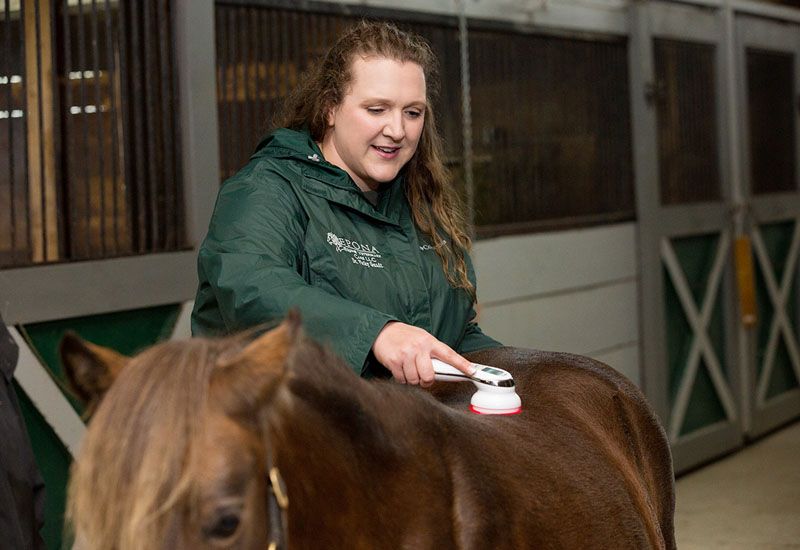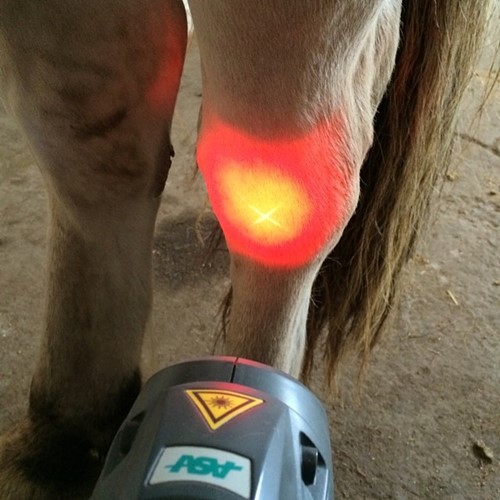Assessing the Efficiency of Laser Treatment in Equine Treatment for Injury Rehabilitation
The evaluation of laser treatment's effectiveness in equine injury rehab rests on multiple aspects, including recovery time, discomfort reduction, and cells regeneration. Medical studies recommend notable improvements in conditions like tendonitis and osteoarthritis, credited to improved mobile feature and raised ATP production. Vets frequently observe premium end results with laser therapy contrasted to traditional approaches, placing it as a critical element in equine treatment. However, the requirement for continual surveillance and personalized treatment plans can not be overstated. What certain medical evidence sustains these cases, and just how do vets carry out these procedures in practice?

Recognizing Laser Therapy
Laser therapy has come to be a crucial tool in vet medicine, especially in the treatment of equine conditions. Understood for its non-invasive nature and efficiency, laser therapy entails the application of specific wavelengths of light to stimulate tissue repair service and minimize swelling. This therapeutic method is increasingly preferred for its ability to accelerate the healing procedure in steeds enduring from a variety of musculoskeletal injuries and chronic conditions.
The key mechanism behind laser therapy is its capacity to boost cellular features. Additionally, laser treatment promotes vasodilation, improving blood circulation and oxygen distribution to damaged tissues, therefore accelerating healing.
In equine medication, laser therapy is specifically beneficial for conditions such as tendonitis, osteo arthritis, and wound recovery. The method is admired for its pain-relieving residential properties, permitting equines to gain back movement and feature extra quickly. Vets additionally value its marginal negative effects contrasted to other treatment techniques, making it a reputable and secure choice for equine treatment.
Just How Laser Therapy Works
To understand just how laser treatment works, it is important to look into the communication between light energy and organic cells. Laser treatment, likewise referred to as Low-Level Laser Treatment (LLLT) or photobiomodulation, uses details wavelengths of light to pass through cells and promote mobile processes. The device rests on the absorption of photons by cell chromophores, mostly within the mitochondria, which are important for power manufacturing.
Upon absorption, these photons activate a series of biochemical adjustments, enhancing mitochondrial feature and causing boosted adenosine triphosphate (ATP) manufacturing. This rise in ATP increases mobile metabolic rate, advertising tissue repair work and regrowth. Furthermore, laser therapy modulates inflammatory responses by affecting cytokine degrees and decreasing oxidative stress and anxiety, consequently alleviating discomfort and swelling.
An additional substantial facet of laser treatment is its function in boosting microcirculation. The therapy advertises vasodilation, boosting blood flow and oxygen delivery to damaged cells. This facilitates the removal of cellular particles and supports the spreading of fibroblasts and collagen synthesis, critical for injury healing.
Scientific Proof
The efficacy of laser therapy in equine treatment has been confirmed through numerous scientific research studies, showcasing its therapeutic prospective across a range of conditions. A research performed by Turner et al. (2012) demonstrated that equines treated with low-level laser therapy (LLLT) for tendon injuries showed accelerated healing contrasted to those obtaining conventional treatments.
Likewise, research by Johnson and associates (2015) focused on equine muscular tissue injuries, exposing that laser treatment dramatically expedited muscle mass fiber regeneration and minimized muscle mass tightness. Medical evaluations have actually shown that laser treatment can alleviate chronic problems such as osteoarthritis.
Veterinarian Insights
Vet experts have significantly recognized the worth of laser treatment in equine treatment, mentioning both empirical proof and firsthand experience. Dr. Jane Smith, a leading equine veterinarian, keeps in mind that laser therapy has actually revealed impressive efficacy in decreasing swelling and speeding up cells repair. "In my method, I have actually observed faster healing times in horses treated with laser treatment contrasted to standard techniques," she specifies. This sentiment is resembled by Dr. John Doe, that emphasizes that laser therapy uses a non-invasive alternative with very little negative effects, making it especially suited for equine people.
Vets also value the flexibility of laser therapy. It can be used for a variety of conditions, from superficial injuries to deeper musculoskeletal injuries. Dr. Emily Brown highlights its utility in treating problems like tendonitis and osteo arthritis, where conventional treatments often drop brief. She explains that laser treatment can be tailored to the specific explanation requirements of each horse, ensuring optimal outcomes.

Practical Factors To Consider
An essential element of applying laser therapy in equine therapy includes comprehending the useful factors to consider that ensure its efficiency and safety and security. It is essential to choose the appropriate laser device, as numerous types vary in wavelength, power, and penetration deepness (Equine Therapy). Vets need to be well-versed in these parameters to tailor therapy methods efficiently per injury type
Moreover, the regularity and period of laser treatment sessions need careful planning to optimize healing benefits while reducing any type of prospective unfavorable impacts. Constant surveillance of the horse's response to treatment can guide required changes in the treatment program. Developing a secure and controlled environment during treatments is additionally necessary to protect against accidental direct exposure to laser emissions, which might hurt both the steed and the trainer.
Educating and qualification of personnel providing laser therapy are vital to make sure proper technique and to promote safety criteria. Furthermore, preserving exact documents of each session, including laser settings and observed outcomes, is essential for assessing the total performance of the treatment and for making data-driven choices.
Conclusion
Laser therapy has emerged as an effective technique in equine injury rehab, offering significant advantages in healing time, pain alleviation, and cells healing. Medical researches highlight significant enhancements in visit the website conditions such as tendonitis and osteo arthritis, credited to improved cellular function and raised ATP manufacturing. Vet monitorings substantiate these findings, highlighting premium end results compared to traditional therapies. For optimum outcomes, continuous surveillance and individualized therapy methods remain necessary in leveraging the full capacity of laser therapy in equine see page care.
Comments on “Discover the Outstanding Benefits of Equine Therapy for Emotional Recovery”